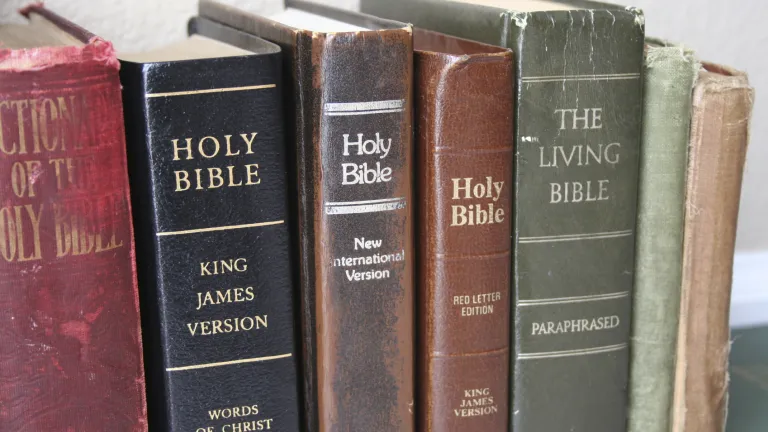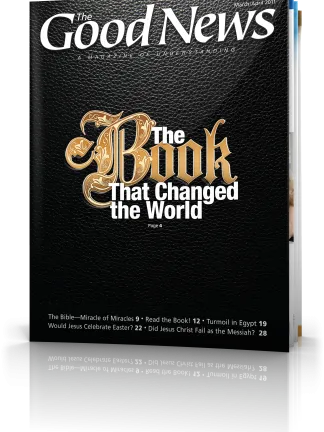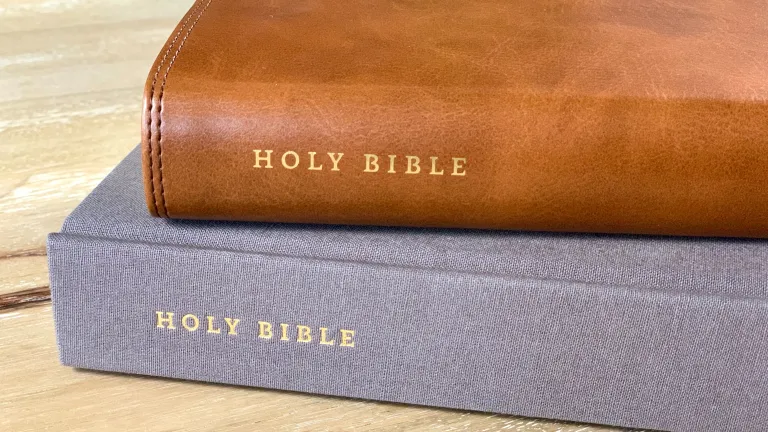What's the Difference Between Various Bible Versions?

Which of the many Bible versions is best for reading and studying the Bible? How do they differ?
The English language has changed substantially over the four centuries since the King James Version of the Bible was first published. Many people find it increasingly difficult to understand the words and may be put off by the KJV's foreign-sounding words. We can be thankful, however, that many newer versions exist that are much more up-to-date in their wording. But this raises another issue: Which of these many versions is best for reading and studying the Bible? How do they differ? The following is excerpted from our free booklet How to Understand the Bible:
More than 60 English-language versions are available. We can divide them into three broad types: word-for-word, meaning-to-meaning (also called thought-for-thought) and paraphrased. Usually a particular Bible version will explain, on its introductory pages, which approach was used in preparing it.
Word-for-word translations
The word-for-word versions most accurately follow the Hebrew, Aramaic and Greek texts. Generally speaking, the King James Version and its modern counterpart, the New King James Version, are word-for-word translations. They are readily found in most bookstores or on the Internet.
How trustworthy is the King James or the New King James Bible we have today? Other manuscripts discovered since the King James Version was translated show it to be extremely reliable. For instance, when the King James Version is compared with what was found in the Dead Sea Scrolls, "the King James Bible is 98.33 percent pure [in terms of comparison]" (Norman Geisler and William Nix, A General Introduction to the Bible, 1974, p. 263).
In the New Testament the sheer bulk of thousands of texts (4,500 Greek manuscripts) means that many minor variations among the manuscripts will be found. The King James Version, for example, is based on the majority of the authoritative Greek texts.
About 98 percent of the known Greek manuscripts agree with the basic text of the King James Bible. Even the variations that do exist rarely affect the basic meaning in the remaining 2 percent of those manuscripts. The text of Scripture has been preserved and transmitted over the centuries remarkably well.
The Old Testament books are equally trustworthy. Although a few textual errors are to be found in some of the manuscripts used in translating the King James Bible, comparisons with other Bible versions can easily clarify most problems.
As an expert on textual criticism remarked: "If any book from ancient times has descended to us without substantial loss or alteration, it is the Bible. The Bible is the best-attested book from the ancient world! This has prompted Sir Frederic Kenyon to say: ‘The number of manuscripts of the New Testament, of early translations from it, and of quotations from it in the oldest writers of the Church, is so large that it is practically certain that the true reading of every doubtful passage is preserved in some one or other of these ancient authorities. This can be said of no other ancient book in the world'" (Neil Lightfoot, How We Got the Bible, 1963, p. 120).
Meaning-for-meaning versions
The accuracy of a version is obviously of utmost importance. Although the King James Version contains some mistakes, to establish sound doctrines the first choice of versions should be a more literal edition such as the King James or New King James Version.
What about the meaning-to-meaning versions? They can be valuable in putting the Scriptures into more understandable wording. For example, the New King James Version of Hebrews 2:17-18, describing why Jesus Christ came to live among mankind as a flesh-and-blood human being, reads: "Therefore, in all things He had to be made like His brethren, that He might be a merciful and faithful High Priest in things pertaining to God, to make propitiation for the sins of the people. For in that He Himself has suffered, being tempted, He is able to aid those who are tempted."
The New International Version, a meaning-to-meaning translation, has: "For this reason he had to be made like his brothers in every way, in order that he might become a merciful and faithful high priest in service to God, and that he might make atonement for the sins of the people. Because he himself suffered when he was tempted, he is able to help those who are being tempted."
The latter explains the point more clearly for most readers today, although the former is a more direct translation of the original language. So, when the text is not clear, many times a modern meaning-to-meaning translation can help. The Revised English Bible, Good News Bible and New Living Translation are other popular meaning-to-meaning translations.
A meaning-to-meaning translation is also helpful in conveying the point of ancient figures of speech—idioms—that would not make sense to us in modern language. Consider the modern American idiom "kick the bucket." This phrase may not be around centuries from now, and someone translating it then might need to use the word "die" instead—a meaning-to-meaning rendering rather than a literal one. Ancient Hebrew and Greek had such expressions as well, and in such cases a meaning-to-meaning translation is very helpful.
In general, meaning-to-meaning versions use more up-to-date language and thus are easier to understand—although, again, they are not the best choice for establishing doctrine because they at times involve some interpretation of what the original writers intended to say.
Paraphrased Bibles
Paraphrased Bibles, such as The Living Bible or The Message, also can be useful. Their goal is to make the Bible even easier to read in modern language. We should be cautious in working with these, however, because the authors exercised considerable "poetic license" in interpreting biblical terms and passages according to their own personal religious ideas.
Paraphrased versions can be consulted to better grasp the story flow but should not be relied on exclusively to establish doctrine. They should be considered inadequate sources for accurately determining the meaning of any text.
Which version of the Bible should you buy? The King James Version, although both accurate and popular, is increasingly difficult to understand simply because the English language has evolved considerably over the 400 years since its publication.
The meanings of some of its words have changed over time. Many readers find the archaic language distracting and difficult to follow. For this reason material produced by the United Church of God, publisher of this magazine, most often uses the New King James Version. This version, while retaining much of the beauty of the original King James wording, is more readable and is still usually faithful to the original text.
Modern translations like those mentioned above are helpful for comparing and clarifying the meaning. Many people find a parallel Bible, which contains two or more versions side by side on the same pages, to be helpful. Indeed, even apart from that it's best to consult multiple versions in studying the Bible, but one will likely be your primary version.
Regardless of the Bible version you choose, the most important factor is that you actually use it. A Bible should be considered an investment in which a little more expense up front will pay off in the long run. Consider buying a version with wide margins that will allow you to add notes from your personal study over the coming years. Although more expensive, a higher-quality, leather-bound Bible will last years longer than a hardbound or paperback volume and should become a lifelong companion.
Many Bible versions are now available as part of Bible software packages or for free viewing on various Internet sites. With these, you can compare between different versions nearly instantaneously.





